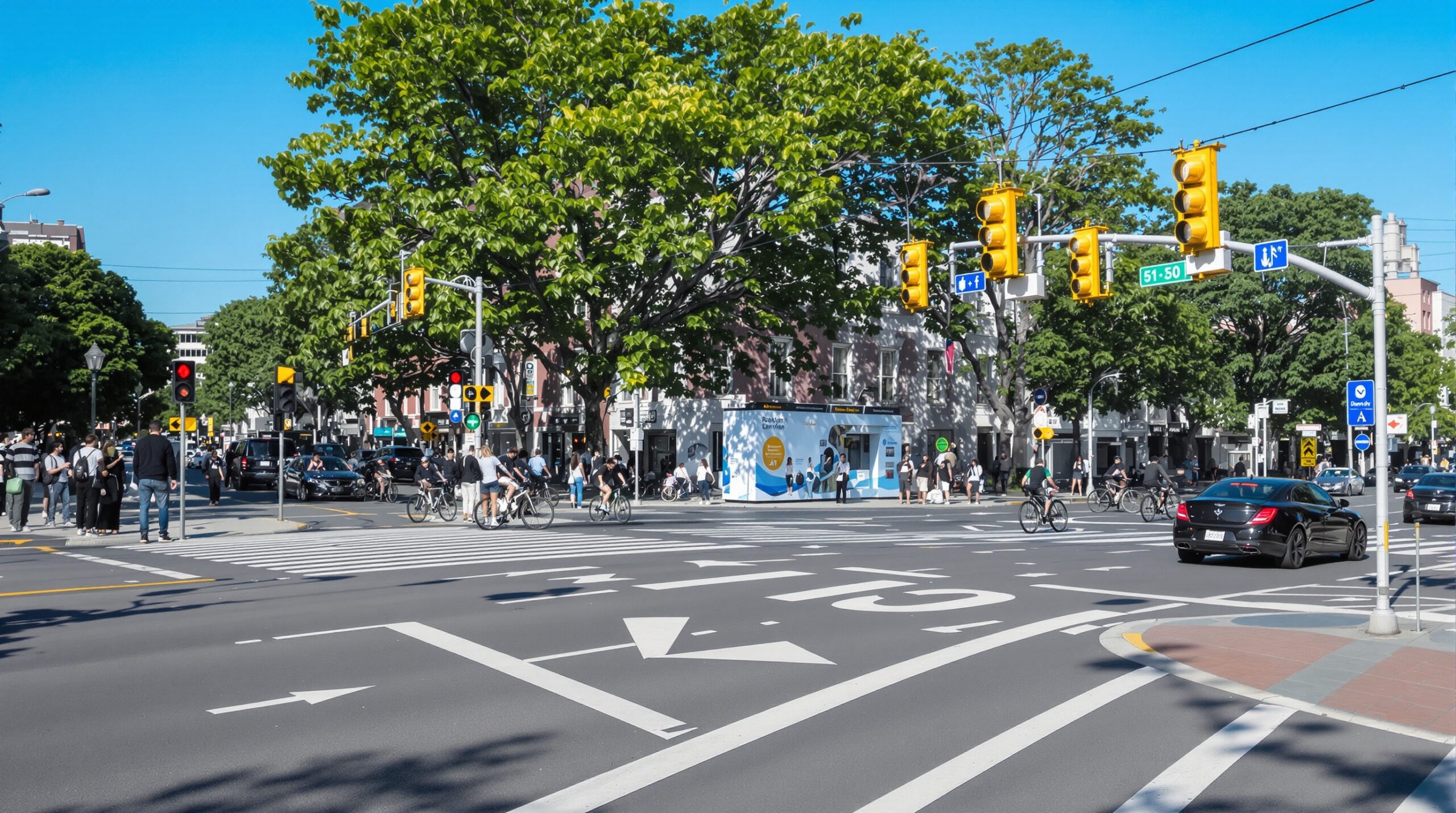Traffic congestion is a growing challenge for many mid-sized cities worldwide. As urban populations climb, roads become busier, resulting in longer commutes and increased frustration. City leaders and transportation planners are seeking innovative solutions to mitigate these issues. One technology gaining rapid adoption is the use of artificial intelligence (AI) in traffic lights. By integrating AI, cities hope to manage intersections more efficiently and reduce congestion.
The Traditional Approach to Traffic Signals
Traditional traffic signals operate on fixed timers or basic sensor-based systems. These systems do not adapt well to dynamic traffic conditions. During rush hours or special events, fixed cycles can lead to backups, idle emissions, and driver frustration. Manual control by traffic operators is often impractical for handling rapid or unpredictable traffic fluctuations. The limitations of conventional systems highlight the need for smarter solutions.
What Are AI-Powered Traffic Lights?
AI-powered traffic lights use machine learning algorithms, real-time sensors, and cameras to interpret traffic flow data. These smart signals analyze factors like vehicle numbers, pedestrian crossings, and even weather conditions. The system then adjusts signal timings based on actual demand. It can optimize the green and red phases to balance competing traffic streams and reduce overall wait times. This adaptive approach enables traffic lights to respond dynamically throughout the day.
Data Collection and Processing
AI traffic systems rely on vast amounts of data collected from different sources. Roadside cameras and embedded road sensors count vehicles and classify them by type. Some systems use Bluetooth or Wi-Fi signals from smartphones and vehicles for additional traffic insights. AI processes this information in real-time, identifying congestion points or unusual patterns. The analysis helps the system make instant decisions to ease bottlenecks as they arise.
Benefits for Mid-Sized Cities
Mid-sized cities face unique challenges in traffic management, often lacking the massive budgets of major metropolitan areas. AI-powered solutions offer a cost-effective way to manage increasing traffic loads. By optimizing signal timings, these systems can reduce average travel times and limit the formation of long queues. Improved traffic flow reduces vehicle idling, cutting down on fuel consumption and greenhouse gas emissions. Enhanced efficiency also benefits public transportation, emergency vehicles, and cyclists.
Case Study: Surprising Results in Several Cities
Several mid-sized cities have already implemented AI traffic control systems with notable success. In Chattanooga, Tennessee, an adaptive AI signal pilot project reduced commute times by up to 16%. The city also reported a significant decrease in intersection wait times during peak hours. Similarly, Milton Keynes in the United Kingdom saw smoother traffic flows and lower accident rates after introducing AI-controlled intersections. These outcomes have inspired other municipalities to consider similar investments.
Integration with Other Smart City Technologies
AI traffic management systems often work alongside other smart city tools. Integration with parking management services helps direct drivers to available spots, easing circulation. Some cities link AI-driven lights with public transit data, allowing transit vehicles to get prioritized green signals when approaching intersections. Coordination across different systems maximizes the benefit to all road users. These combined approaches offer a holistic solution to urban mobility challenges.
Challenges and Considerations
Although promising, AI-powered traffic lights do present certain challenges. Initial installation costs and infrastructure updates can be substantial, especially for older cities. Proper maintenance and cybersecurity are essential to avoid failures or hacking attempts. Data privacy is another concern, as the systems process large volumes of information about drivers and pedestrians. Cities must address these aspects during planning and deployment to ensure long-term success.
Public Engagement and Perception
Public acceptance of AI-driven traffic management varies among communities. Transparent communication about the technology’s goals and benefits builds trust with local residents. When people notice improvements in their daily commutes, their confidence in AI-powered lights tends to grow. Educational campaigns can also dispel misconceptions and encourage responsible driving behavior. Engaged communities are more likely to support continued adoption and innovation in traffic management.
The Future of AI Traffic Signals in Mid-Sized Cities
AI’s role in urban traffic management is expected to expand in the coming years. Ongoing advancements in sensor quality, computing power, and algorithm design will further enhance performance. Future systems may predict traffic surges based on special events, weather, or even social media data. With the rise of connected and autonomous vehicles, AI traffic lights could communicate directly with cars, coordinating flows far more efficiently than today. These possibilities could transform not just mid-sized cities but urban mobility around the world.
Conclusion: Smart Signals for Smarter Cities
AI-powered traffic lights offer mid-sized cities a powerful tool to fight congestion and improve the quality of life. Through real-time analysis and adaptive control, these systems ease daily commutes, support sustainability goals, and encourage economic growth. While challenges remain, pilot projects demonstrate the technology’s potential to transform urban transportation. As more cities embrace AI-driven solutions, we may see a dramatic shift toward safer and more efficient streets. The evolution of traffic lights marks a hopeful step forward for both residents and city leaders alike.

